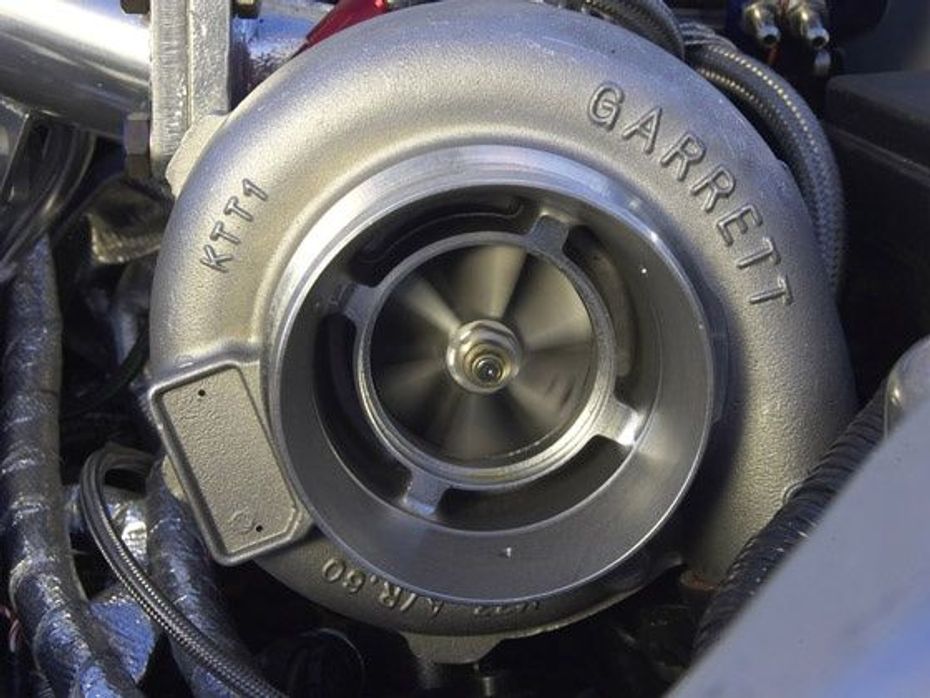
3 New Major Design Details Mahindra XUV 3XO Will Pack Over...
- Apr 12, 2024
- Views : 9609


A turbo charger has a turbine and compressor on a common shaft. The turbine which is placed in the exhaust manifold starts to rotate as exhaust gases from the engine start flowing out. The kinetic energy generated from the rotating turbine drives the compressor. The compressor sucks in air from outside and pumps it into the intake manifold, as a result there is more air entering the cylinders. There is a wastegate which is controlled by the Electronic Combustion Unit (ECU) that vents excess exhaust gases to bypass the exhaust turbine so that too much air is not pumped into the cylinders which avoids physical damage to the engine.
When there is more air entering the cylinders more fuel can be added to produce a bigger explosion which results in more power and torque output from the engine. This is a huge advantage over using a bigger engine to produce more power. Using a bigger engine leads to more weight and lower efficiency, also it decreases the power to weight ratio of a car. By using a turbo charger the weight of the car does not increase by much but the power output significantly increases, thereby increasing the performance of the car.
A turbo charger may also be used to increase the efficiency of an engine without any attempt to increase the power output of the engine. The compressor pumps in a limited amount of air into the cylinders which helps to ensure that all fuel is burnt before being vented at the start of the exhaust stage. However, a turbo charger is not completely efficient. One cause of inefficiency is because of a turbine being present in the exhaust manifold which restricts the exhaust. This means that on the exhaust stroke the engine has to use more push harder against backpressure. This results in a loss of pressure from the cylinders which are firing at the same time.
When a turbo charger is used to increase performance the main problem is that the boost in power is not immediate as it takes time for the turbine to speed up before the boost is produced. This results in lag as the car moves ahead and then lunges forward when the turbo kicks in, this is called turbo lag.
To overcome this problem two turbo chargers can be installed onto one engine. The smaller turbo charger will provide boost quickly at lower engine speed to reduce turbo lag, but will be cut off by the waste gate at higher engine speeds. This is when the bigger turbo chargers takes over to provide more boost at higher engine speeds.
Variable Geometry Turbo Charger
A Variable Geometry Turbocharger is capable of altering the direction of exhaust flow to optimize turbine response. It has movable vanes in the turbine housing to guide exhaust flow towards the turbine. An actuator can adjust the angle of these vanes, in turn vary the angle of exhaust flow.
At low RPM the vanes are partially closed hence accelerating the exhaust gas towards the turbine. Moreover, the exhaust flow hits the turbine blades at a right angle which makes the turbine spin faster.
At high RPM the exhaust flow is strong enough. The vanes are fully opened to take advantage of the high exhaust flow. The vanes can also direct excess exhaust pressure out of the turbo charger as a result there is no need for a wastegate.
Benefits of turbo charging:
1. Increased power from an engine of the same size or reducing the size of an engine with the same power output.
2. Increasing the power to weight ratio of a car.
3. Increasing the fuel efficiency of an engine.
Earlier turbo charging was done purely for performance purposes. After people have realised the benefits of turbo charging, the trend is increasingly going towards turbo charging to increase efficiency and reduce emissions.
The purpose for which turbo charging was established has started growing at a faster rate recently. The current BMW M5 has switched to a turbo charged V8 engine downsizing from the naturally aspirated V10 in the previous model and yet it produces more power than the outgoing model.

3 New Major Design Details Mahindra XUV 3XO Will Pack Over...

Tata Curvv: A Much Clearer Look At Its Interior Ahead Of Its Unveiling

Citroen Basalt vs Tata Curvv: Exterior Design Compared

10 New Features Expected In The Upcoming 2024 Mahindra XUV 3XO...

The Fronx Has Been Rebadged! Meet The Toyota Urban Cruiser Taisor,...

Here’s How Fuel Efficient The 2024 Maruti Suzuki Swift Sold In...

MG Hector And Hector Plus Blackstorm Edition Launched At Rs 21.25...

Mahindra XUV300 Facelift Teased, Gets A New Name

Citroen Basalt Vision, Its SUV Coupe For India, Revealed
India's largest automotive community